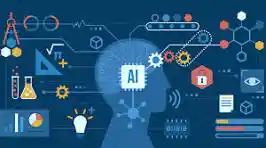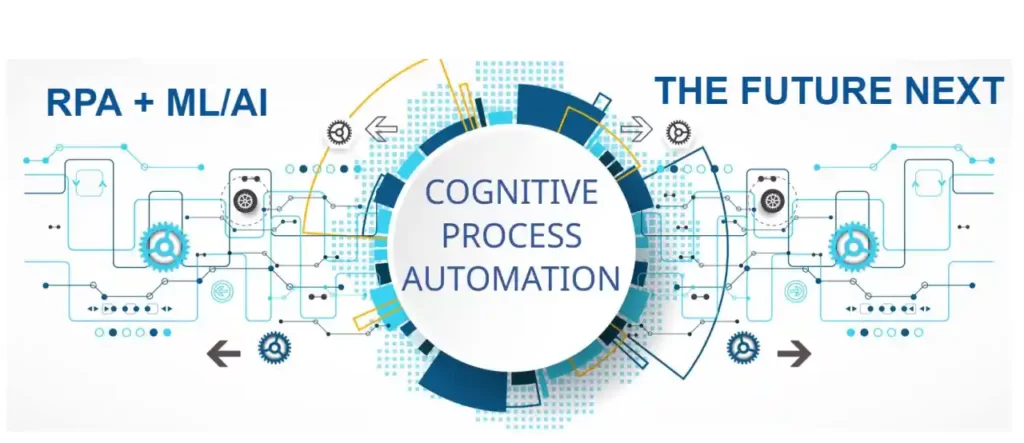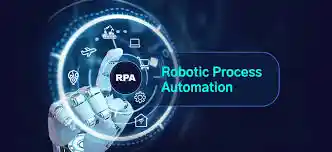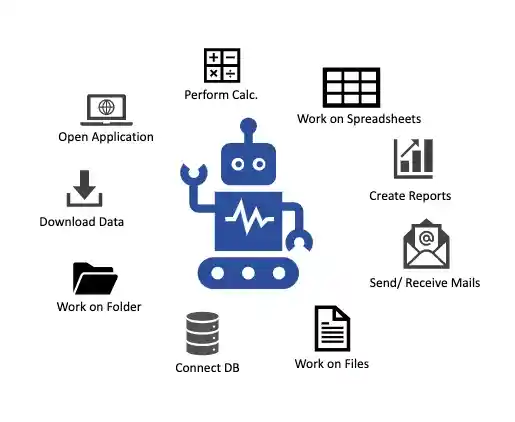Comparing Cognitive Automation and Robotic Process Automation
Table of Content
Boosting efficiency and streamlining business processes are of utmost importance to any organization. When combined, RPA and Cognitive Automation have the power to completely change how we work.
Before we delve deeper into these concepts, let’s take a moment to understand what they actually signify:
- RPA (Robotic Process Automation)
Visualize a tireless software bot that takes care of repetitive digital tasks automatically. RPA empowers anyone to create these “bots”, which can mimic and execute predefined business processes based on established rules.
- Cognitive Automation
Cognitive automation is when software applies intelligence to information-heavy tasks, going beyond the basics. The strength of this system lies in its ability to integrate RPA with Artificial Intelligence (AI) and cognitive computing, resulting in a powerful solution.

While both RPA and cognitive automation streamline processes, cognitive automation offers an additional layer of intelligence, making it well-suited for tasks requiring analysis and decision-making.
This blog goes into more detail about the key differences between RPA and cognitive automation, helping you figure out which one is best for your business.
Cognitive Automation
Imagine software that doesn’t just automate tasks, but also analyzes and understands information. That’s the power of cognitive automation. It builds upon Robotic Process Automation (RPA) by adding a layer of intelligence powered by Artificial Intelligence (AI) and cognitive computing.

How Does It Work?
Cognitive automation takes RPA a step further. While RPA automates repetitive tasks based on predefined rules, cognitive automation uses AI to enhance those actions. It can:
- Process complex data: Cognitive automation tackles unstructured data, like customer interactions, that traditional RPA struggles with. It analyzes and structures this data, making it usable for further processing and predictive analytics.
- Make smarter decisions: By understanding the data, cognitive automation can make informed decisions. This leads to more efficient processes and improved business quality.
Benefits for Your Organization
- Automate more processes: Cognitive automation handles a wider range of tasks compared to RPA, freeing up your workforce for higher-value activities.
- Unlock the power of data: Unstructured data becomes a valuable resource, providing insights for better decision-making and predictive analytics.
- Boost efficiency and quality: Streamlined processes with fewer errors lead to improved business performance and customer satisfaction.
- Drive digital transformation: It facilitates a smooth transition to a more digital and data-driven organization.
It empowers your business to automate tasks with intelligence, unlocking significant benefits for efficiency, data utilization, and overall success.
Cognitive Automation Applications
Cognitive automation is revolutionizing how businesses operate by adding intelligence to automation. Here’s a glimpse into how it transforms various departments:
1. Human Resources
Cognitive automation streamlines resume screening by filtering candidates based on specific criteria. It can even predict employee resignation risks and analyze employee sentiment, empowering HR teams to make informed decisions.
2. Finance Automation
No more tedious manual entry! Cognitive automation extracts data from documents like invoices and sales orders, ensuring accuracy and streamlining processes like reconciliation and payment processing.
3. Enhanced Marketing and Sales
Craft targeted marketing campaigns by leveraging cognitive automation. It predicts sales opportunities, personalized greetings, and generates quotes, fostering stronger customer relationships.
4. Streamlined Customer Service
Cognitive automation classifies incoming customer emails, routing inquiries to the appropriate team members. It can even suggest solutions and automate initial responses, providing faster and more efficient support.
5. Procurement Optimization
Machine learning empowers cognitive automation to classify purchasing requests and compare quotes. This streamlines the procurement process and enhances decision-making.
6. Data-Driven Reporting
Go beyond basic data compilation. Cognitive automation can analyze reports, detect trends and anomalies, and even pull data from multiple sources, providing valuable insights for better decision-making.
This is just a glimpse into the transformative power of cognitive automation. By intelligently automating tasks across departments, businesses can achieve greater efficiency, unlock valuable data insights, and ultimately gain a significant competitive edge.
Robotic Process Automation
RPA empowers you to create software robots, or “bots,” that mimic and automate repetitive digital tasks. No coding experience is required! Just set up your workflows – log in, copy data, move files – and the bot is good to go.

Benefits of an RPA Digital Workforce
- Unmatched Efficiency: RPA bots work nonstop, 24/7, with 100% accuracy and precision, freeing up your human workforce for more strategic tasks.
- Adaptable to Any System: Say goodbye to system limitations. RPA bots can interact seamlessly with any application or program, streamlining processes across different platforms.
- Unstructured Data Extraction: Unlock the power of unstructured data. RPA bots can extract information from emails, web pages, and other sources, transforming raw data into actionable insights.
- No System Disruptions: RPA integrates seamlessly with your existing infrastructure. There’s no need to overhaul your systems to experience the benefits of automation.
RPA empowers you to automate repetitive tasks across your organization, freeing up your employees’ valuable time and energy. This translates to increased efficiency, reduced errors, and ultimately, a significant competitive edge. Embrace the power of your digital workforce and watch your business thrive!
Robotic Process Automation Applications
Robotic Process Automation (RPA) is revolutionizing workflows across industries. Here’s a glimpse into how RPA automates tasks and boosts efficiency in various sectors:
1. Finance & Banking
Streamline processes with RPA by automating tasks like data validation, migration between applications, and customer account management. Generate reports, fill forms, process loan claims, and update data with flawless accuracy. RPA also helps back up teller receipts, ensuring data security.
2. Manufacturing
RPA automates logistics data, monitors production lines, and streamlines ERP (Enterprise Resource Planning) systems. It can compare product pricing across platforms, allowing for data-driven pricing strategies.
3. Retail
RPA eliminates manual updates by automatically extracting production data from manufacturer websites, updating online inventory levels, and refreshing product information on retail sites. It can even import email sales data, saving countless hours.
4. Healthcare
RPA takes care of tedious tasks like patient data migration and processing, allowing doctors to focus on what matters most – patient care. Automate medical billing processing, insurance data management, claim processing, and track claim status and eligibility. RPA can even facilitate secure patient record storage.
5. Telecommunications
RPA extracts competitor pricing data, backs up client information systems, and consolidates client phone data, allowing for better service offerings and faster response times. It can automate data uploads, freeing up employees for more strategic tasks.
This is just a sampling of RPA’s transformative impact. By automating repetitive tasks across industries, RPA empowers businesses to achieve greater efficiency, improve data accuracy, and ultimately, unlock a significant competitive advantage.

Cognitive Automation vs Robotic Process Automation
| Feature | Cognitive Automation | Robotic Process Automation (RPA) |
| Focus | Automating complex tasks requiring data analysis and decision-making | Automating repetitive, rule-based tasks |
| Technology | AI, Machine Learning, NLP, data mining | Screen mapping, pre-defined rules |
| Implementation | More complex, requires advanced technical skills | Relatively simple, requires basic technical skills |
| Return on Investment (ROI) | Slower initial ROI, higher long-term ROI | Faster ROI |
| Human Interaction | Less human intervention needed | May require some human intervention for exceptions |
| Task Examples | Trend analysis, customer service interactions, behavioral analysis, email automation | Data entry, claims processing, resume scanning, order processing |
| Knowledge | Knowledge-based | Process-oriented |
| Data Handling | Can handle complex, unstructured data | Primarily handles structured data |
Cognitive Automation and RPA : Understanding the Key Differences
In today’s data-driven world, automation is key to streamlining workflows and boosting efficiency. But with two powerful technologies on the table – Robotic Process Automation (RPA) and Cognitive Automation – selecting the right solution can feel daunting. Let’s break down the key differences to help you make an informed decision.

Application Focus
- RPA: Excels at automating repetitive, rule-based tasks. Think data entry, claims processing, and order fulfillment. It thrives in situations where human intervention or decision-making is minimal.
- Cognitive Automation: Tackles complex tasks that require data analysis and informed decision-making. It handles large data sets – including unstructured data – and assists humans in making better business choices. Customer service interactions and trend analysis are prime examples.
Technological Backbone
- RPA: Relies on predefined rules and screen scraping to mimic human actions with high accuracy. It’s relatively simple to implement, requiring basic technical skills.
- Cognitive Automation: Leverages advanced technologies like Machine Learning (ML), Natural Language Processing (NLP), and data mining. This complexity necessitates a deeper understanding of programming and data science.
Automation Methods
- RPA: Operates on a “if-then” principle, following a pre-defined script for each task. It’s a process-oriented approach, often used to automate tasks traditionally handled by offshore teams.
- Cognitive Automation: Employs a “learning” approach. It analyzes data and user interactions to develop its own set of rules and best practices. This “knowledge-based” approach allows it to adapt to changing situations.
Data Processing Power
- RPA: Functions like a data operator, primarily working with structured data formats. Think spreadsheets and databases. Unstructured data, such as emails or social media posts, is beyond its capabilities.
- Cognitive Automation: Operates like a data scientist. It can handle complex, unstructured data, drawing inferences and identifying patterns to provide valuable insights for decision-making.
Conclusion
If you are dealing with Structured Data, Repetitive Tasks, then RPA is the clear winner. Its ease of use and fast ROI make it ideal for automating high-volume, rule-based tasks.
If you are dealing with unstructured complex data and informed Decisions then Cognitive Automation takes the lead. Its ability to analyze unstructured data and learn over time empowers smarter decision-making.
Consider exploring a hybrid approach. Many RPA tools can be fortified with cognitive automation capabilities. This “best of both worlds” solution offers a powerful end-to-end automation experience.
Understanding the strengths of both RPA and Cognitive Automation equips you to select the right tool for the job. By automating tasks and leveraging data insights, you can unlock a new level of efficiency and propel your business forward. Don’t hesitate to consult with software vendors who understand the evolving landscape of automation. Robylon AI, for instance, offers a robust and versatile platform that integrates RPA and cognitive automation seamlessly. Together with Robylon AI, you can develop a customized solution that empowers your workforce and drives success.







